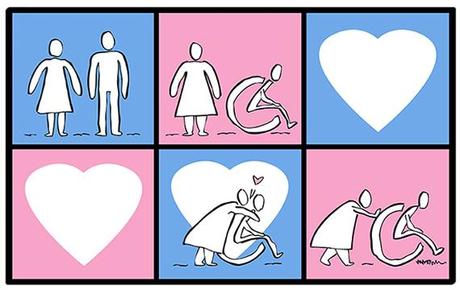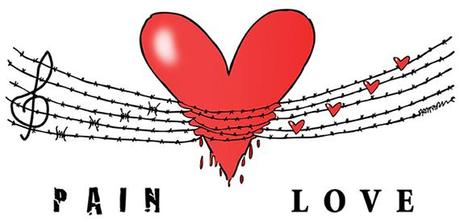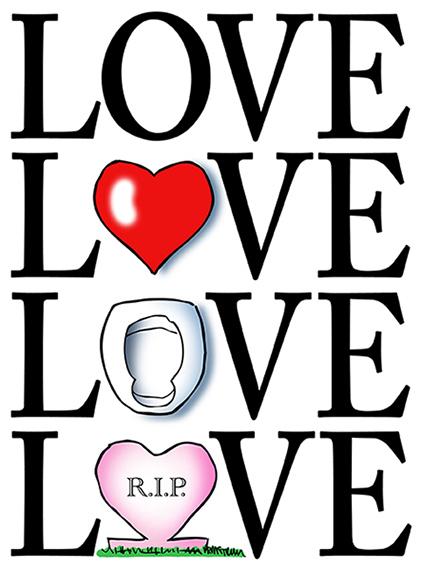“Sorry,” she said as she passed me in the entrance to the women’s room, “That’s my husband in the other stall. Don’t mind him.” She was going back to her car.
Her husband was in the farthest stall, the one typically large enough for a wheelchair to turn around. There was one stall left for me…
There were only two cars parked by this restroom, mine and the older woman’s, a sturdy car like a Bonneville, gray like the sky. She was rounding the driver’s side to return to the restroom (as I returned to my car).
“Thank you,” she said, “for understanding.” In her right hand were her keys, and in her left, was a blue, waffled diaper, disposable…
“Everything OK?” I said.
And the woman paused, breathed a little, raised her eyes with a slight smile on half her face. “Fine,” she said. “Thank you.”
And she made her way up the path to the women’s restroom and her husband in the large stall…”

* * * * * * * * * * * * * * * *

So opens a very moving essay written by Kate Gray and published in The Rumpus.
It focuses on a difficult subject: caring for a disabled spouse. I was asked to illustrate the essay.

“Wheelchair” made me think of the familiar International Symbol of Access, perhaps more commonly known as the Wheelchair Symbol.
I decided to use the symbols commonly seen on restroom doors to show a progression suggested by the essay’s opening lines: a couple begins married life in good health; one of them becomes disabled; the other loves in sickness as she did in health, and demonstrates that love by caring for the disabled spouse.
I drew and inked the figures by hand to give them more personality, and because it was necessary to show specific actions in the last two panels.

I was also struck by a line further along in the essay:

“… the way a tree leans on barbed wire, the pressure making the body take in the barbed wire eventually, growing around it, adapting to the inevitable.”

There’s no escaping life’s barbs, but love has a transforming power, especially when it seeks the good of another. A wounded heart can love more deeply.

Caregiving represents love in perhaps its purest form. Changing a spouse’s diaper is not a romantic image. Doing it in a way that preserves the person’s dignity is nothing less than heroic.
Diapers made me think of bedpans, which led to this final image, a kind of meditation on love.
Modern culture would have us believe that romantic love is all there is: pretty people, fun and games. Real love is much more: it embraces sacrifice and puts the other first. And it endures even after death.


* * * * * * * * * * * * * * * *

I enjoyed this assignment. I love a challenge, and it gave me a chance to stretch. It also got me thinking about the subtle nature of humor.
The subtitle of this blog is: Because nothing succeeds like humor and good illustration.
In my LinkedIn profile, I say: Nothing communicates an idea more powerfully than a carefully crafted illustration. Humor multiplies its power.
Which leads to a question: where’s the humor in the above illustrations?
For me, there is humor in all three illustrations, but it’s a far cry from slapstick or comical humor. It’s a quirky kind of humor that springs from the unorthodox– using objects in an unconventional way.
Restroom symbols acting out a mini-drama; barbed wire as a musical scale; a bedpan used to spell out the word Love. They do seem a little comical if you think about them in isolation. But woven into the graphic, they give the images a certain poignancy.

Humor is a lot broader and more subtle than we normally think. It can add real power to an illustration.

* * * * * * * * * * * * * * * *

Do you know any caregivers? Are you perhaps a caregiver yourself?
Any thoughts on love? Have we forgotten that love often demands sacrifice?
Has this post broadened your concept of humor? Does humor have a unique power to communicate?
Hope you’ll leave a comment.
If you enjoyed this post, please click the Like button below.
If you’d like to share this post with others, please click Tweet or Facebook or one of the other Share buttons.

